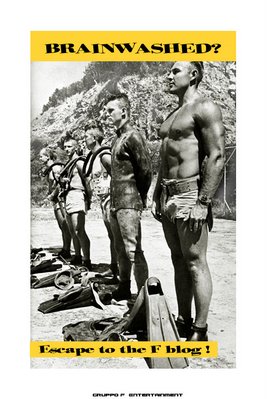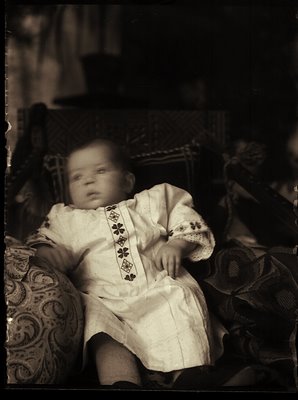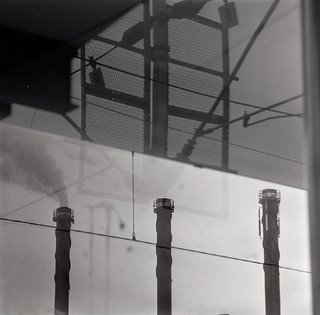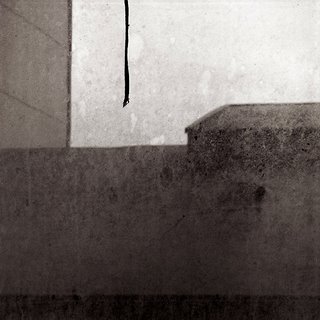03 November 2006
Guest: Diego Levy
The world is one. And the world is real. But the reality of people living in this world differ from place to place, depending also on living conditions, education, gender and many other things. I have made it my mission to introduce good photography from Spain and Latin America on The F Blog.
My first invitation is Diego Levy, a young and very talented photographer from Buenos Aires, Argentina. The pictures shown here hit me hard, it was a similar feeling to me like watching the film Amores perros. Diego sent me eight pictures, two from each city; Buenos Aires, Rio de Janeiro, Medellin and Mexico City. I decided to publish all of them.
invited by ulf fågelhammar
See more of Diego Levys work here.
The introduction to Levy´s pictures is written by Juan Travnik, Photographer, Buenos Aires; Director, Fotogalería del Teatro San Martín, Buenos Aires: Photography
INTRODUCTION
Just some decades ago, in most of the quarters of Buenos Aires there was a frequent setting to be seen: neighbors talking among them for hours seated in front of their houses. These situations, utterly uncommon today, were typical scenes of summer evenings. However, after the political struggles and state terrorism of the brutal dictatorship of the second half of the ‘70s, there followed
a new phenomenon of crime and street violence of another origin, related to marginal sectors and crime, which has grown fast as from the ‘80s. During the year 2000, Diego Levy started to get involved in these issues, which had not yet played the leading part in the media they would later do. Except for some extraordinary cases, they were covered by most of the newspapers within the
police section, and only the most resonant ones would have a headline coverage.
These first photographs that Levy turned into a personal essay, began to shape the series Sangre. Later, he went on searching similarities and differences in the cities of Rio de Janeiro, Medellín and México DF.
Since he worked without the generally slanted pressures of news editing offices,his straight look and his sharp and forcible frame, did not search clichés or low blows. His images show what is there in fact: bloody scenes of violence, wounded and dead people who may turn up just around any
street corner. Scenes which have now become almost daily for the inhabitants of these cities. They are either their protagonists or witnesses; they may watch them on television or read them in the papers. Such images are many times used unscrupulously, in perfectly calculated doses, to boost
sales or to influence on public opinion and exert pressure on hidden political maneuvers.
The increase in violence and crime has peculiar characteristics in each city and in each country, but it has also common elements which always go in hand with neoliberal economic policies and high levels of corruption, which brought about strong economic concentration, huge inequalities and
a devastating social exclusion. Out of this circuit and away from such interests, Levy introduces the topic in a different discipline, that of visual arts, field in which it is uncommon to see such cruel and touching images. Like the great exponents of suspense novels or films noir, he portrays crime and death that nowadays brutally mark life in the big cities of Latin America.
02 November 2006
Guest: Mattias Schulstad
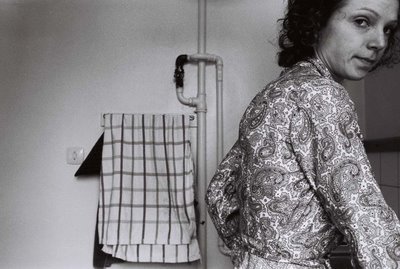 Ever since I first saw this picture by Mattias I have been thinking of it
Ever since I first saw this picture by Mattias I have been thinking of it
from time to time. I am glad to be able to show it here on The F Blog.
invited by ulf fågelhammar
Here is what Mattias writes about the photo:
"(Realitet) I´ve choosen to call this picture reality. The picture is taken
in the morning. Before breakfast, before makup, before getting dressed.
It´s just her, the cold kitchen and the bright morning sun outside."
Street
 An old project, photographing the Stockholm street art scene a few years ago. For an up-to-date view of the scene, take a look at www.gatukonst.se (although the photography is not very good there.)
An old project, photographing the Stockholm street art scene a few years ago. For an up-to-date view of the scene, take a look at www.gatukonst.se (although the photography is not very good there.)
01 November 2006
Guest: Alec Soth
Ever since my hands first opened Sleeping by the Mississippi (Steidl, 2005) and my eyes glanced at the world through Alec Soth's mind, I have been returning to his images, time and time again. In them I find something quite remarkable. I call it the intense gaze. It seems to me that Soth - when looking at the world - can see right through it, into its narrative core.
When I see a bus full of people, crossing my way as I walk to work, I always wonder what stories each and everyone in that bus could tell me. If Soth were to photograph that imaginary bus of mine, I am pretty sure that he - his intense gaze - would answer my question. Maybe the resulting photograph would not have told me every person's story. I am, however, convinced that it would not have been far off the mark.
In an interview in SeeSaw Magazine, Soth objects: "I long for stories. Novels and movies satisfy, but photographs often leave me feel like something is missing. [...] Some day I would like to figure out a way to tell a good story." I do not agree. At all. Soth's photographs, to me, are full of stories.
The story of Soth that have affected me the most is the story of Dog Days. It is the story of Carmen Laura - and the story of Bogotá. Soth writes:
My wife and I adopted our baby girl, Carmen Laura, from Bogotá, Colombia. While the courts processed her paperwork, we spent two months in Bogotá waiting to take Carmen home.
Carmen's birthmother gave her a book filled with letters, pictures and poems. "I hope that the hardness of the world will not hurt your sensitivity," she wrote, "When I think about you I hope that your life is full of beautiful things."
With those words as a mission statement, I began making my own book for Carmen. In photographing the city of her birth, I hope I've described some of the beauty in this hard place.
Below you will find some of the photographs Alec Soth made for Carmen. More of Soth's work can be seen here.
J. S-g.
Invited by Joakim Sebring.
31 October 2006
Big City Tour
30 October 2006
For your eyes only
Guest: Carolina Lopes
 Portuguese photographers are often trapped by surrounding them reality of old towns, olive trees and donkeys – cannons of traditional BW Portuguese photography.
Portuguese photographers are often trapped by surrounding them reality of old towns, olive trees and donkeys – cannons of traditional BW Portuguese photography. I am personally impressed by the fact she didn’t allow herself to become a hostage and she dares to show her real world, not Lisbon Story like frames.
I am personally impressed by the fact she didn’t allow herself to become a hostage and she dares to show her real world, not Lisbon Story like frames.
Carolina Lopes, very young photographer from
More works of Carolina you can find on her blog
invited by Marcin Górski













